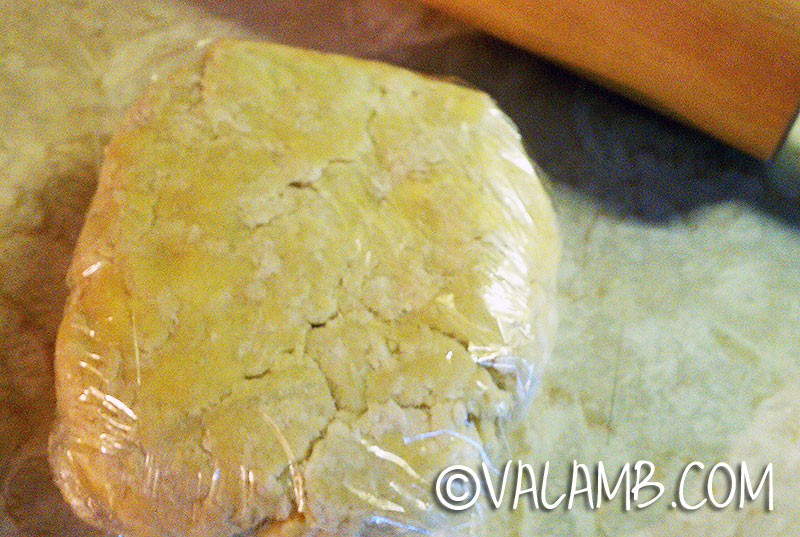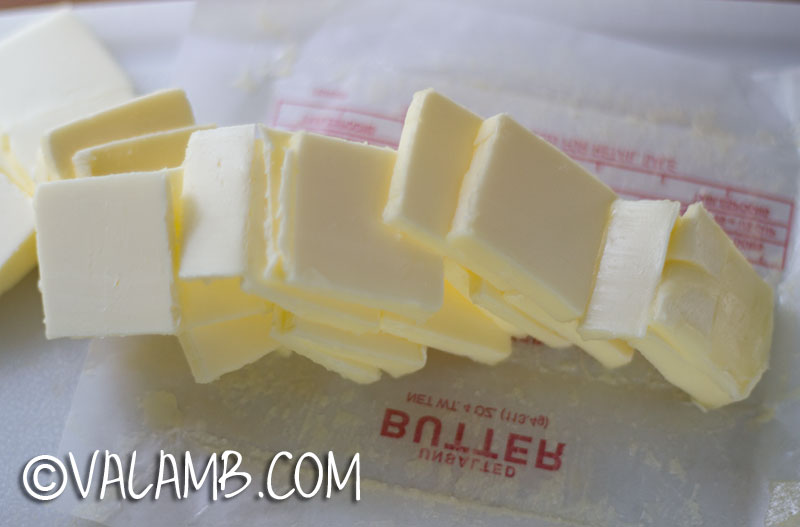And as many of you know, I am much more into cooking than baking, as I am truly a dump and explore kind of girl. But even so, it was time to make a pie. I have no idea why I don’t make them more often. They seem intimidating, and then I make one, and ask myself for the hundredth time, what was all the fuse about. My mother use to whip up pies, like I do savories. She won so many grand champion ribbons with her pies that the county fair’s homemaking department ask her to take a time out and give someone else a chance. Hmmm, now there is a challenge (and I love challenges!).
So I dug through my old trusted recipe file for my go to pie dough (a hand-me-down from Mom). It had been a while since I baked a pie and was disappointed to be reminded that one of the key ingredients was shortening — hydrogenated oil. Oh, boy, time to tweak the recipe.
After several pies, tarts, and even a galette, I have learned that all pie crusts are not created equal. I perfected my butter pie crust but my galette (freeform) crust failed to hold its shape. So after a lot of reading, testing, and tweaking, I have narrowed it down to two main recipes depending on my needs.
Regardless of which one you use, keep in mind the three cardinal rules when it comes to pastry dough.
- Keep it cold.
- Work quickly.
- The dryer the flakier.
Pâte Brisée (broken dough)
This is the dough we think of when we remember our mom’s (or grandmom’s) wonderfully flakey pie crust. This works best for fruit pies, lattice crusts, and savory dishes (for savory pies, reduce sugar to 1 teaspoon).
Recipe for Double Crust
- 1 cup butter, unsalted
- 2 1/2 cups flour
- 1 teaspoon salt
- 1 tablespoons sugar
- 1/3 – 1/2 cup very cold water
Cut the butter into very thin slices and place in freezer for 30 minutes. Meanwhile, mix flour, salt, and sugar in large bowl. Place bowl in freezer for 15 minutes.
Add butter to flour and toss. Using fingers work the butter into the flour with a rubbing action. You still want to be able to see small flakes of butter in the flour. If the butter begins to warm, return bowl to freezer.
Add water, starting with 1/3 cup. Work dough, pressing together. If dough does not begin to hold its shape, add more water, 1 tablespoon at a time. Use only enough to form a ball. It will be crumbly but still hold its shape. Press into disk.
Wrap dough in plastic wrap and refrigerate for 30 minutes to 1 hour.
When ready to use, remove from refrigerator, unwrap, cut in half and roll out on floured surface. Keep the other half wrapped in frig until ready to use.
Pâte Sucrée (sweet dough)
This is a great dough for tarts or freeform galettes. This dough will stand on its own without the support of a pie pan and it is sweeter in flavor.
Recipe for Single Crust
- 1 1/2 cup flour
- 1/2 cup butter, unsalted
- 1/2 teaspoon salt
- 1/4 cup sugar
- 1 egg yolk, beaten
- 2-4 tablespoons very cold water
Cut the butter into very thin slices and place in freezer for 30 minutes. Meanwhile, mix flour and salt in large bowl. Place bowl in freezer for 15 minutes.
Add butter to flour and toss. Using fingers work the butter into the flour with a rubbing action. Continue until dough resembles a course crumble – in this dough you do not want to see small flakes of butter in the flour. If the flour/butter begins to warm, return bowl to freezer.
Add sugar and mix.
Add beaten egg and 2 tablespoons of water. Dump dough onto unfloured surface. If dough does not begin to hold its shape, add more water, 1 tablespoon at a time.
Knead the dough in long smooth strokes three or four times. Form the dough into a ball. Press down forming a disk. (This dough is much smoother than the Pâte Brisée.)
Wrap ball in plastic wrap and refrigerate for 30 minutes to 1 hour.
When ready to use, remove from refrigerator. Unwrap. Using minimal flour on rolling pen, roll out dough on top of the plastic wrap.

